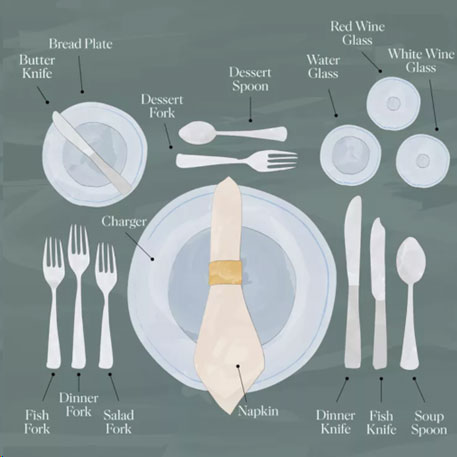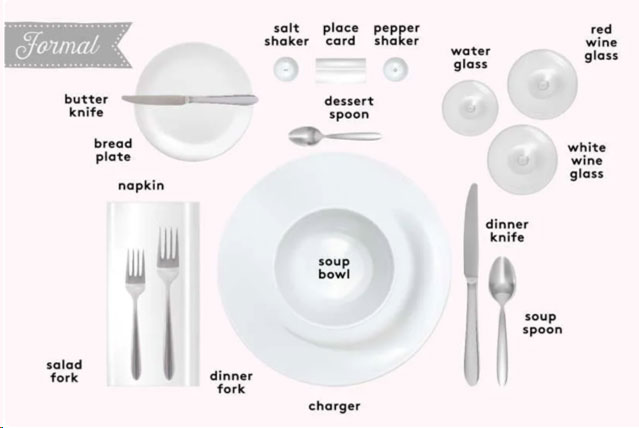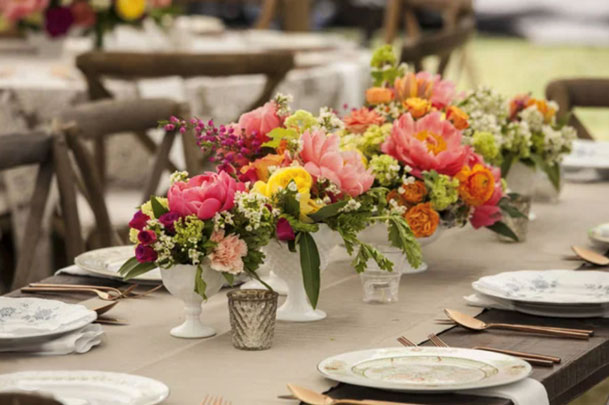FAQ: What is the proper way to set a formal dinner table?
Setting a table can make all the difference, whether hosting a grand banquet or an intimate dinner party. The way you arrange your table can set the mood, elevate the dining experience, and even spark conversation.

Knowing how to set a table is a skill that involves great attention to detail:
- Napkin Rings: Place neatly on the napkin.
- Forks: Position on the left, with the dinner fork nearest to the plate, followed by the salad fork and dessert fork.
- Spoons: Set on the right of the plate, with the soup spoon to the right of the teaspoons.
- Knives: Place on the right with the blade facing the plate.
- Tablecloths: Ensure a clean and pressed tablecloth for a polished look.
When setting a formal table, remember the rule of "outside in." This means arranging the cutlery based on the order in which it will be used, starting from the outside and working inward toward the plate.
Understanding Different Types of Cutlery
- Dinner Fork: Largest fork for the main course.
- Salad Fork: Smaller fork for salads or appetizers.
- Dessert Fork: Smallest fork for desserts.
- Round Soup Spoon: Round bowl-shaped spoon for soups.
- Dessert Spoon: Slightly larger than a teaspoon; ideal for desserts.
- Teaspoons: Smaller spoons for stirring coffee or tea.
- Dinner Knife: Suited for slicing through dishes with precision.
- Butter Knife/Spreader: A blunt edge and a slim, elongated blade tailored for spreading butter with ease.
Silver Superstore Cutlery Selections
- Dinner Fork: Moda Dinner Fork, Gorham Studio Dinner Fork or Hafnia Dinner Fork by Yamazaki
- Salad Fork: Consider a selection from Oneida, including the Butler Salad Fork, Calm Salad Fork, or the Easton Salad Forks Set of 4
- Dessert Fork: Sambonet Flat Dessert Fork, Marly Sterling dessert fork by Christofle, or the Corelli Dessert Fork
- Soup Spoon: Round Soup Spoon by Oneida, Italian Countryside Oval Soup Spoon by Mikasa or the Wallace Emerson Oval Soup Spoon
- Dessert Spoon: Chantilly Large Dessert Spoon and Fairfax Large Dessert Spoon
- Teaspoons: Consider the Oneida teaspoons sets, like the Dover Teaspoons Set of 4 or the American Harmony Teaspoon Set of 4
- Dinner Knife: Choose top Oneida picks like the Juilliard Dinner Knife or Louisiana Dinner Knife
- Butter Knife: The Boston Antique Butter Serving Knife by Towle and Bistro Butter Knife by Fortessa
Guidelines for Formal Table Settings

In a formal setting, set the table before guests arrive to create an inviting atmosphere.
Adhere to these guidelines for setting plates, glasses, and cutlery:
- Plates: Place the charger plate first and the dinner plate in the center, in front of each chair.
- Bread plates: Placed to the left, above the forks, with a butter knife laid horizontally across the plate.
- Glasses: Arrange from right to left in the order of water, white wine, and red wine.
- Cutlery: Organize from outside to inside, with the cutlery used first placed on the outer edges.
Guidelines for Formal Table Settings

For casual or informal settings, you can involve guests in the process or set the table just before the meal is served.
Simplicity is key:
- Use fewer utensils and glassware.
- Opt for a more relaxed arrangement of cutlery.
- Consider placemats instead of a tablecloth for a laid-back vibe.
Centerpieces and Table Decor

Placemats and tablecloths are the foundation of your table setting.
- Floral arrangements, candles, or seasonal decorations can add flair.
- Ensure centerpieces are low enough to allow easy conversation across the table.
- Personal Touches: Add elements that reflect your personality or the theme of the event, such as small trinkets or themed decor items.
Timing and Etiquette
Proper timing and etiquette are essential when dining:
- Start the meal by using utensils from the outer edges and work your way in.
- Remember to pace your eating to align with others at the table.
- Use appropriate dining etiquette throughout the meal.
Adjust your table settings according to the meal's progression. Remove used plates and cutlery between courses, and replace them with the appropriate pieces for the next course. This keeps the table organized and ensures guests have the right tools for each dish.
Next Question: How should I use my napkin during a meal?
Or click here to return to the main FAQ page.
